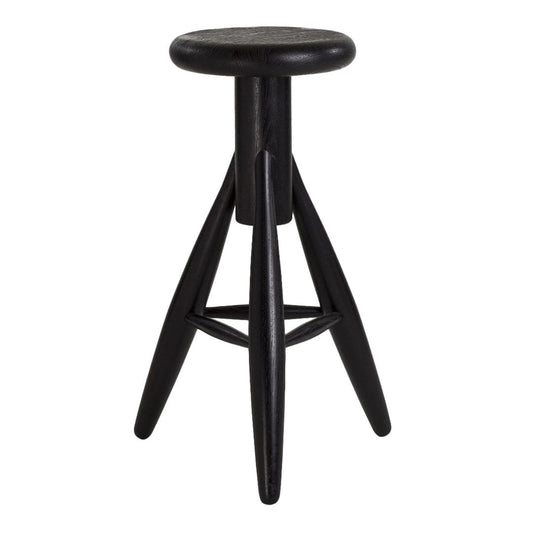컬렉션: Eero Aarnio
Born in 1932, Eero Aarnio is one of the most influential Finnish designers, globally renowned for his original plastic creations. Born and raised in the Kallio district of Helsinki, as a child he showed marked talent for drawing. At a very young age, he joined the office of architect Heikki Sysimetsä, who noticed his unusual gifts and encouraged him to attend the Institute of Industrial Arts in Helsinki. While studying interior design, the young designer worked for the two renowned architects, Imari Tapiovaara and Antti Nurmesniemi. After his marriage to Pirkko Attila, he obtained his diploma; in 1958, he moved to Lahti in southern Finland, where he worked in the Asko furniture factory. Extremely curious and endowed with a subtle ironic vein, the young Aarnio was a free spirit who resented any kind of limitation to his lively imagination and desire to experiment. In 1962, he returned to Helsinki and began working as an independent designer while maintaining close relations with Asko, which produced many of his furnishings.
His first commercial success came with the rattan Mushroom stool, presented at the 1962 Cologne Furniture Fair. In his home/workshop, Eero made drawings and prototypes in true-to-life scale and experimented with curved plywood and composite materials, including fibreglass. After several attempts, the designer finally succeeded in realising the prototype for an idea that had obsessed him since childhood: a globe-shaped armchair, a plastic and fibreglass capsule with a glossy white finish upholstered inside in a deep red fabric. Asko insisted on exhibiting the strange futuristic armchair, named Ball Chair, at the 1966 Cologne Furniture Fair. Its success was immediate and Aarnio's career as an independent designer took off. His armchairs revealed an unmistakable style. The Tomato and Pastil Chairs were awarded the 1968 American Industrial Design Award. The plastic V.S.O.P. Cognac Chairs, the Bubble Chair, and the Kanttarelli coffee table and the upholstered Captains Chair were produced and marketed by Asko until 2016 when Eero Aarnio Originals acquired exclusive rights.
While designing furniture with innovative and extravagant forms, Aarnio's approach always begins with function and ergonomics. His career spanned the 1960s and 70s, and developed over time, as evidenced by the success of more recent creations like the Screw screw-shaped coffee table (1991), the Copacabana table (1991), the Parabel table (1993), and the Duck Timer for Alessi (2013). He also designed many items for children like the Rosinante rocking horse for Vondom (2013) and the Ping (2011) and Puppy (2019) toys for Magis. Today, his designs are exhibited in the permanent collections of such museums as MoMA in New York, the V&A in London, the Centre Georges Pompidou and the Musée des Arts Décoratifs in Paris, Die Neue Sammlung in Munich, the Stedelijk Museum in Amsterdam, and the Design Museum Helsinki.



















